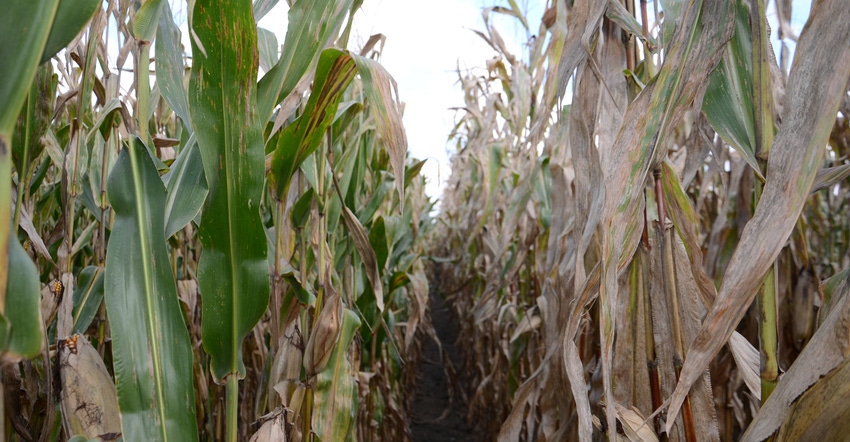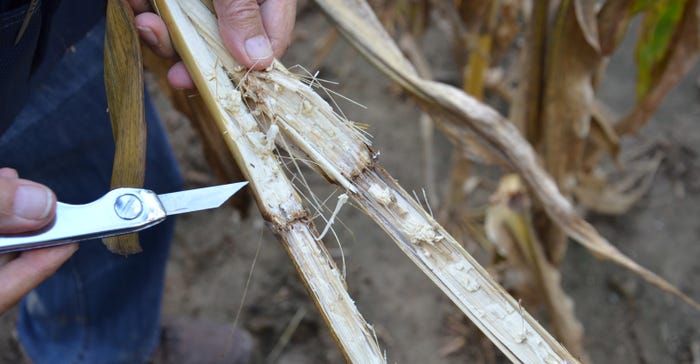
You could tell that two different hybrids were planted side by side across the Corn Watch ’18 field by many different characteristics. Perhaps most striking late in the season, just before harvest, was the difference in stay-green power. One hybrid still had relatively green leaves, while the other was bleached out and almost entirely brown.
That was one of Dave Nanda’s first observations during his preharvest visit to the field. Nanda, a former corn breeder, is an independent crop consultant based in Indianapolis. Corn Watch ’18 is sponsored by Seed Genetics-Direct, Washington Court House, Ohio.
Nanda decided to check for stalk rot. Which hybrid would have the highest percentage of stalks already affected by rot? It would be the hybrid that was brown and appeared to be the most mature, right? If you’re a betting person and bet that way, you might be a big loser.
Nanda counted off 100 plants in a row in each hybrid. Then he returned down the same row and pushed each of the 100 plants in each hybrid.
“It’s called the push test,” he says. “It’s a simple way to determine if plants likely have stalk rot, and how soon lodging might become an issue. If they snap back, they’re still healthy stalks. If they break over or lean over, they’re likely already infected.”
And the winner is …
Nanda found that four stalks didn’t snap back on the hybrid with green leaves. Only two didn’t snap back on the hybrid that was brown. Since he had counted 100 plants in each, he could compute percentage easily. Percentage of plants with stalk rot in the hybrid with green leaves was 4%. Percentage of plants with stalk rot in the brown hybrid was 2%. The hybrid that appeared to be healthier had more issues with stalk rot at this point in the season than the other hybrid.
Obviously, leaf diseases and stalk rot aren’t always correlated. If leaf diseases are rampant, they can stress plants and set up those plants for secondary infections, including stalk rots. However, other things can stress plants as well and leave them vulnerable to stalk rot.
Nanda examined the plants that didn’t snap back. He found one in the row with greener leaves with classic symptoms of anthracnose stalk rot. There were black specks on the lower outside portion of the stalk. “It resembles shoe polish,” Nanda says.
When he split the stalk open, it was discolored around the nodes. There was also a slight rotten odor.
 WHICH HYBRID? This stalk didn’t snap back when pushed. Once split open, you can see evidence of stalk rot. It’s from the hybrid with greener leaves, on the left in the photo above.
WHICH HYBRID? This stalk didn’t snap back when pushed. Once split open, you can see evidence of stalk rot. It’s from the hybrid with greener leaves, on the left in the photo above.

Nanda notes that 4% may not seem like a high percentage, but it’s an indication that stalk rot is beginning to take hold in the field.
“It’s a sign that you want to harvest the field as soon as the moisture content is low enough that it’s practical to do so,” he says.
About the Author(s)
You May Also Like




